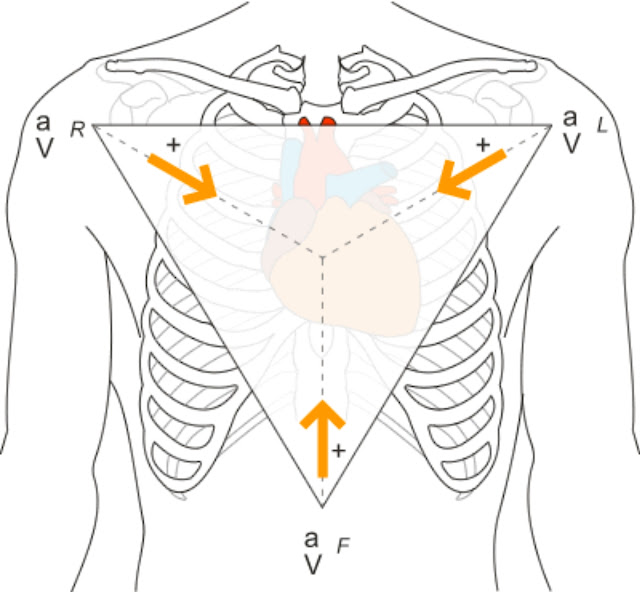Justify the use of vector cardiograph in electrical activity of heart. Illustrate the significance of unipolar and bipolar electrode configuration used in ECG with neat sketch and elaborate moment artifact and transient protection circuit in detail.
Justify the use of vector cardiograph in electrical activity of heart. Illustrate the significance of unipolar and bipolar electrode configuration used in ECG with neat sketch and elaborate moment artifact and transient protection circuit in detail.
vector cardiograph
Vector cardiography is the technique of analysing the electrical activity of heart by obtaining ECG along three axis.The display is know as vector cardiogram.This gives the representation of distribution of electrical potential generated by the heart , and produces loop type patterns on the CRT screen.The vectorcardiography examines the ECG potentials generated along the three-dimensional axes of the body. i.e., that is x, y, and z planes.The x vector is taken as the potential between two points under the arms, the y vector is between the head and right leg, and the z vector is from the front to the back of the body.
significance of unipolar and bipolar electrode configuration used in ECG
Unipolar Leads
Well, so far we have nine wires. They all look directly at the heart with tunnel vision. They only give information based on what is immediately in front of them. These nine wires are known as "unipolar leads".The three active peripheral leads are AVr, AVL, and AVf.The "AV" stands for "Augmented Vector".
Bipolar Leads
Well, the 2 leads situated on the right and left wrist (or shoulders), AVr and AVL respectively, and the lead situated on the left ankle (or left lower abdomen) AVf, make up a triangle, known as "Einthoven’s Triangle". Information gathered between these leads is known as "bipolar". It is represented on the ECG as 3 "bipolar" leads. So,
information between AVr and AVl is known as lead l.
Informationbetween AVr and AVf is known as lead ll
Informationbetween AVl and AVf is known as lead lll
Transient Protection
Transients (momentary spikes in voltage or current) can disrupt or damage the products connected to signal or power lines. Common sources of transients energy coupled from lightning, electrostatic discharge and circuits experiencing a sudden change in current due to a switch opening or a short occurring.
Transient protection devices attempt to re-direct the energy in these transients by taking advantage of the differences between the transient waveform and the intended signal or power waveform. The most common transient protection schemes limit the voltage amplitude, current amplitude or transition times on the circuit they are protecting.



Comments
Post a Comment